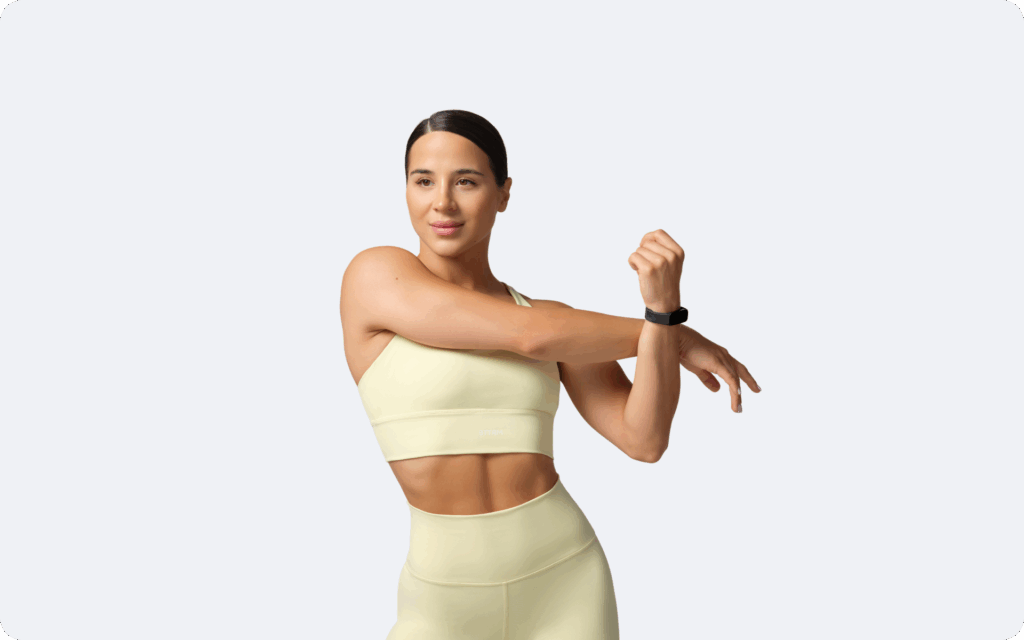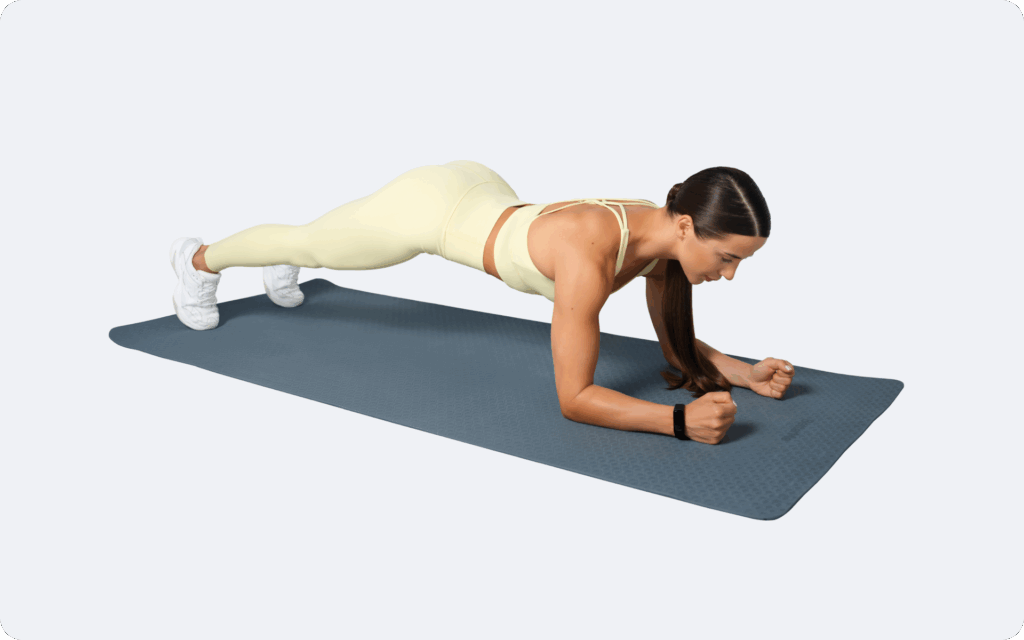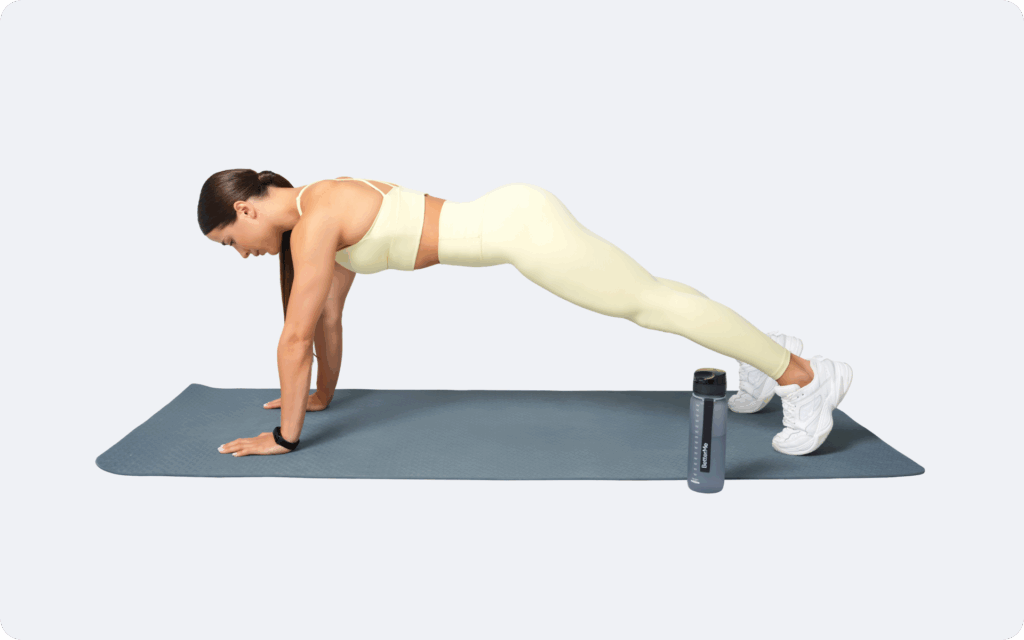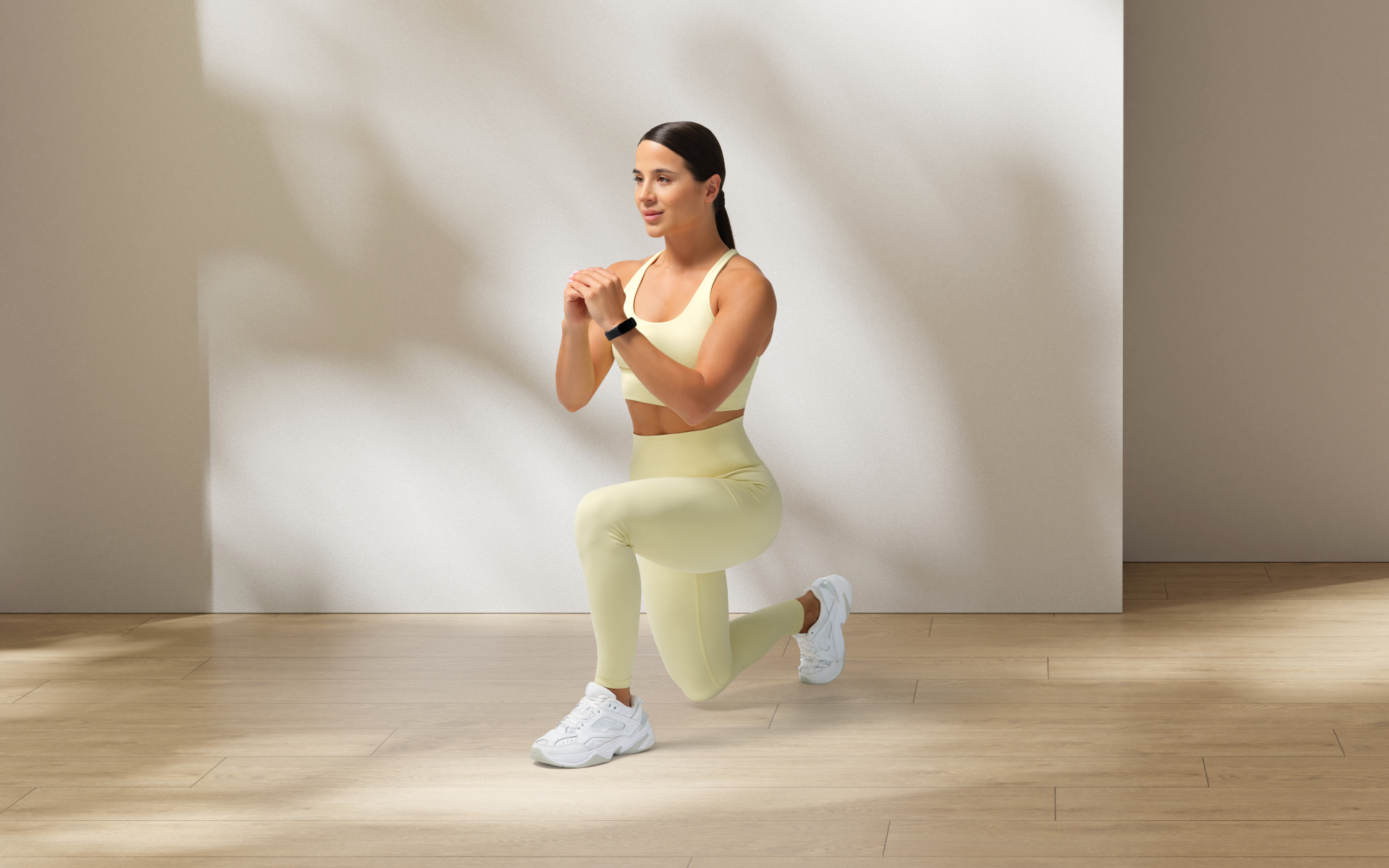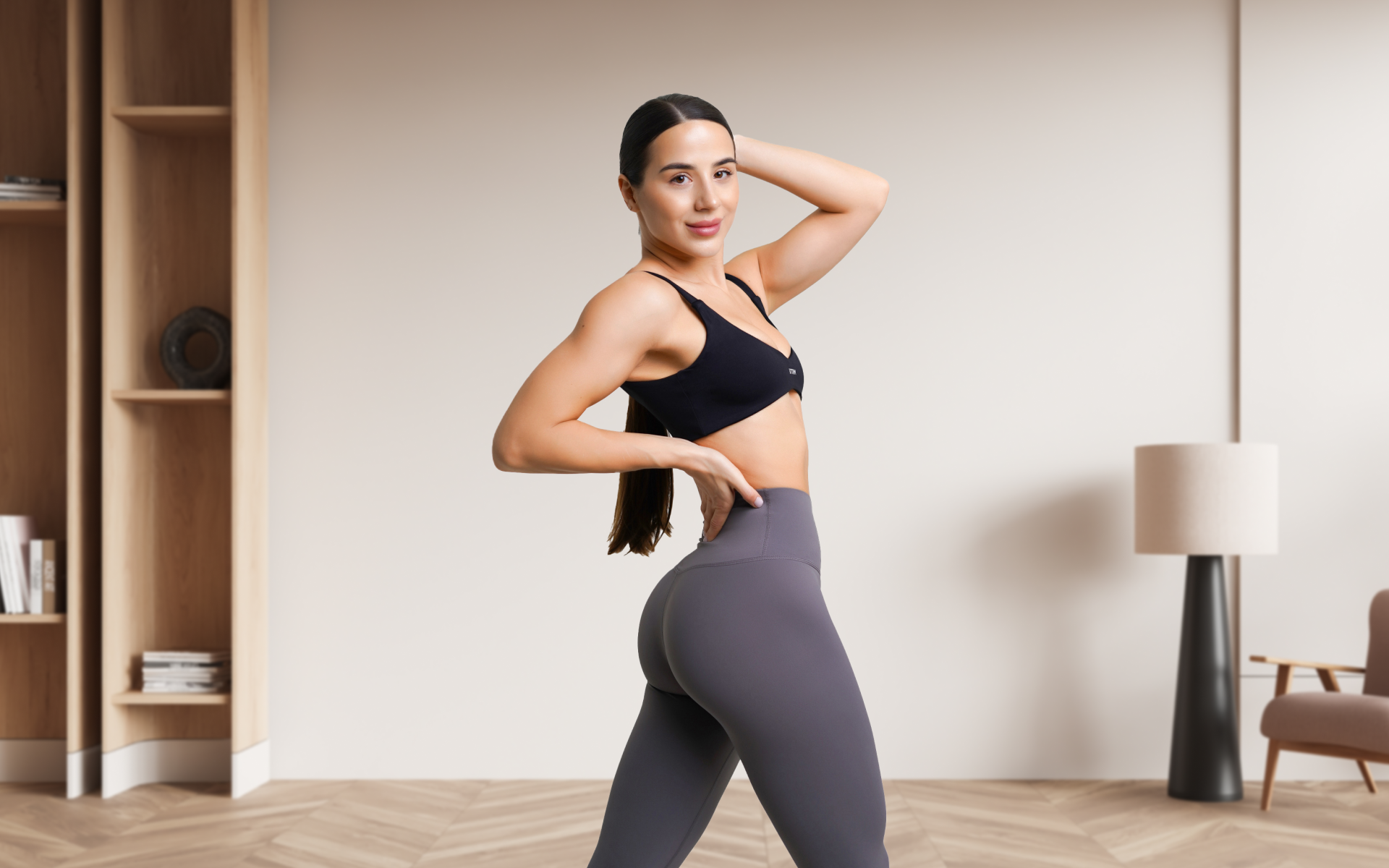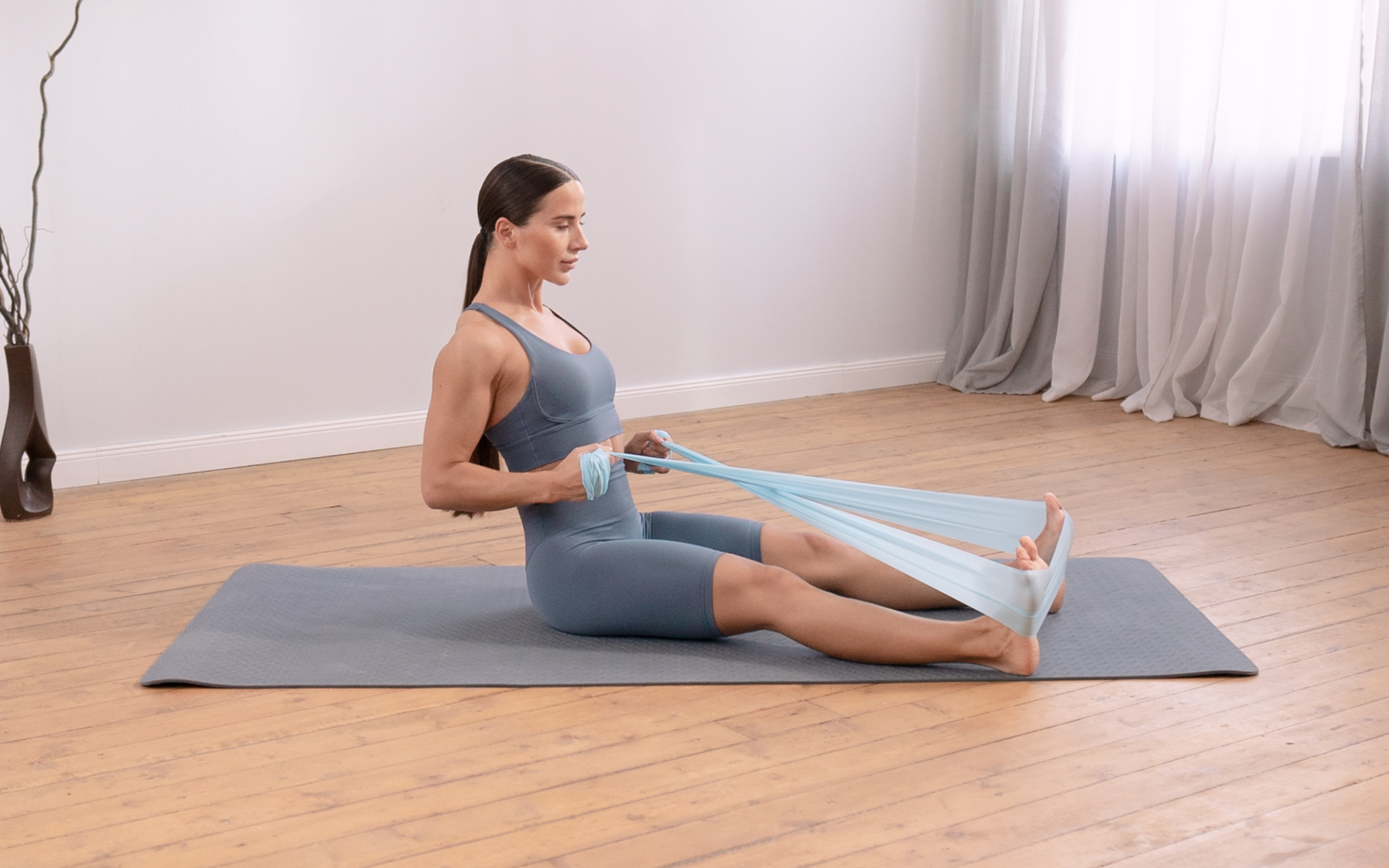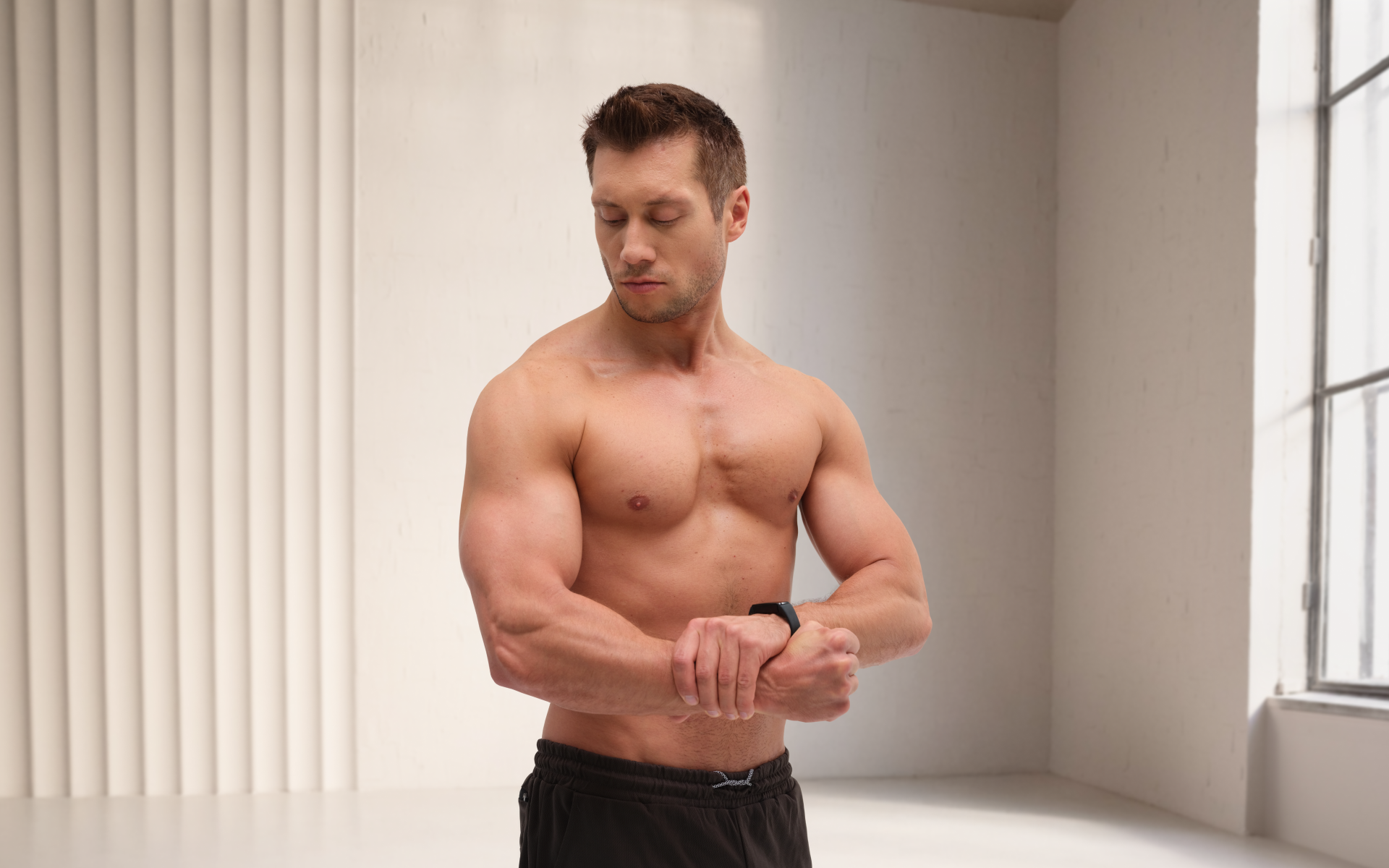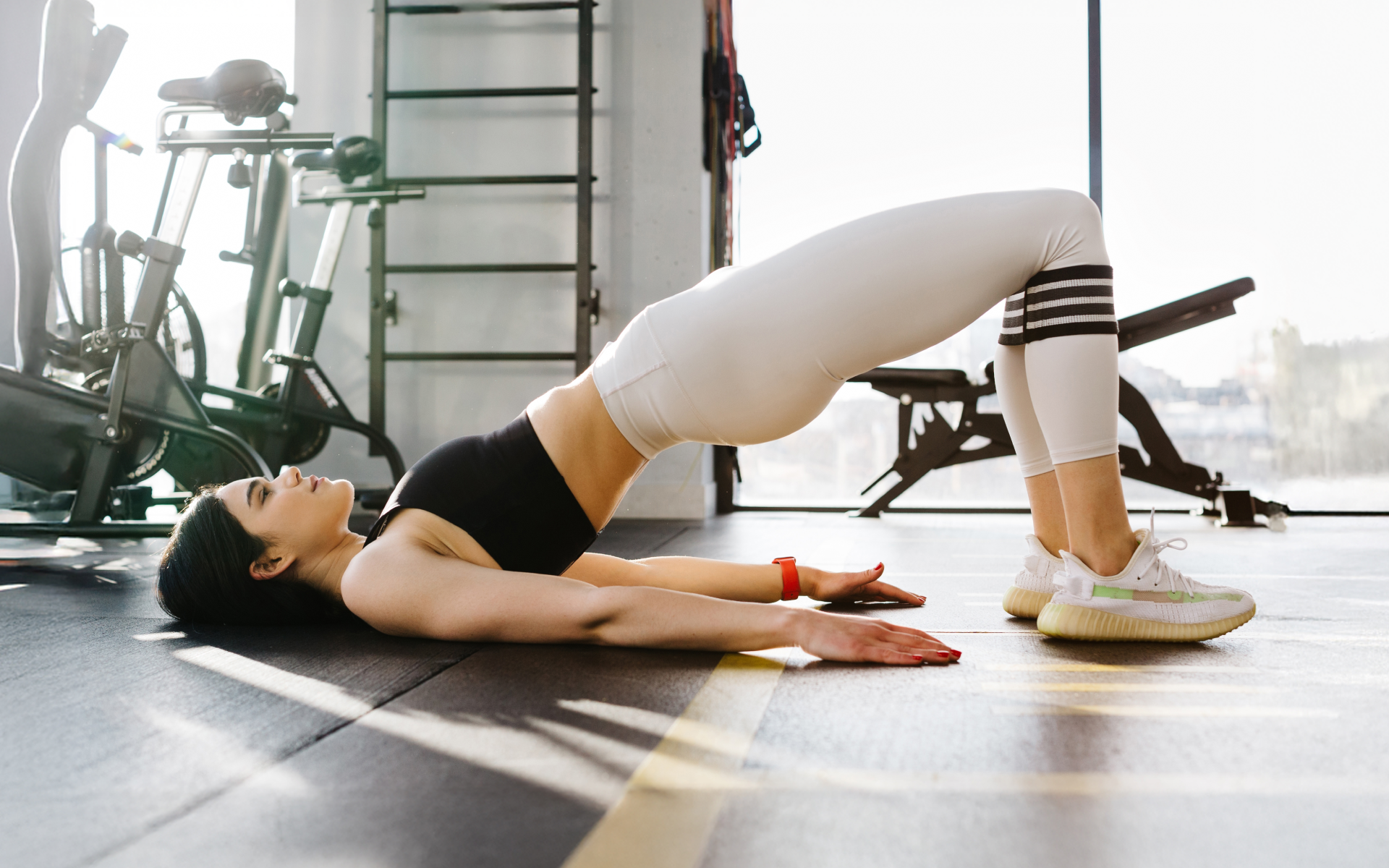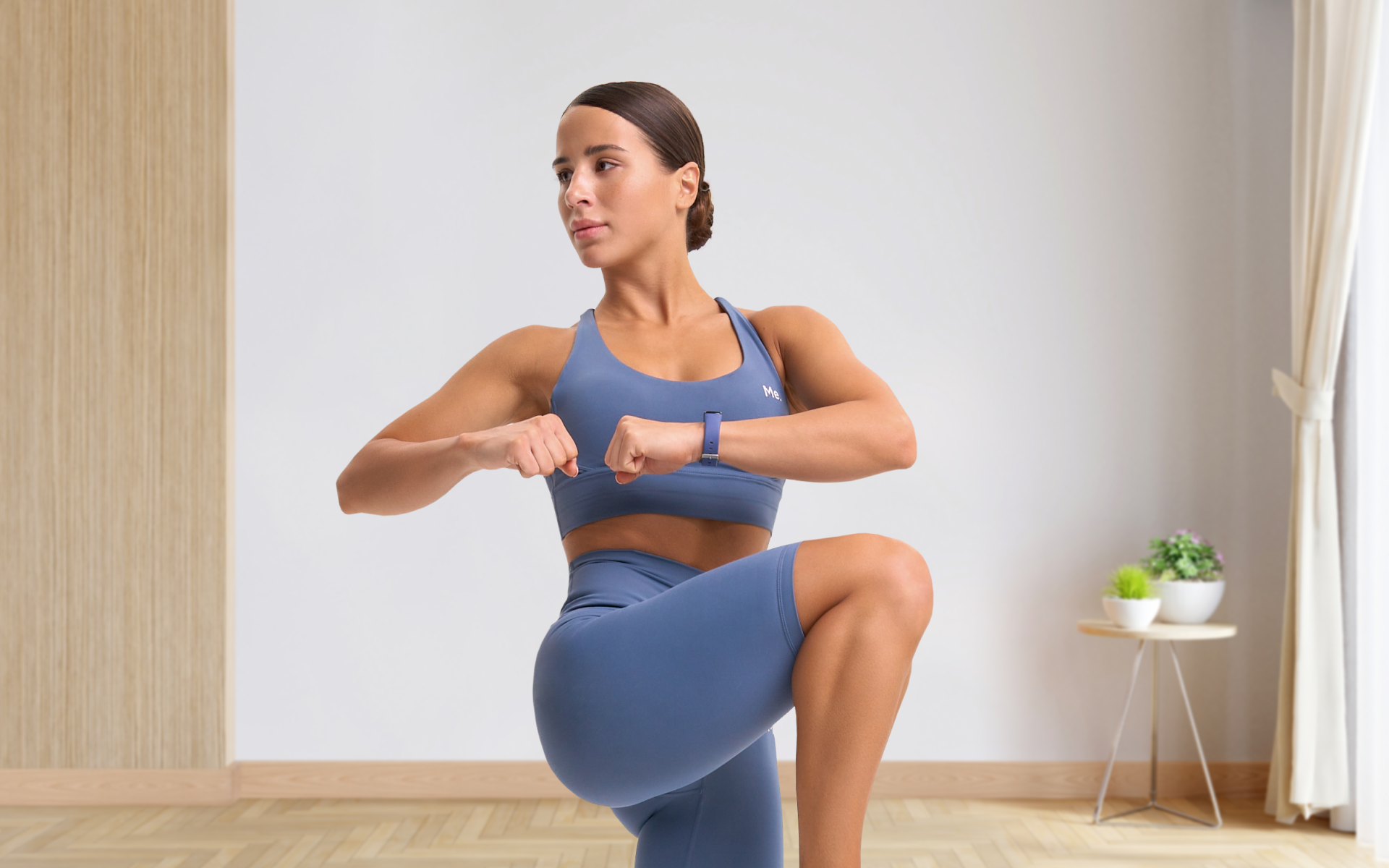You know that awkward feeling when you try something new and every muscle in your body screams “nope”? Starting a fitness routine can feel a little bit like that – uncomfortable, confusing, and way outside your comfort zone, particularly when all you really want is a way to move your body without jumping straight into something extreme. This is where easy calisthenics moves come in.
This style of training is refreshingly simple. No fancy equipment, no gym contracts – just your body, a little space, and some motivation to get going. Movements such as push-ups, wall sits, or gentle squats might look basic, but they’re stronger than they seem. And they can be done pretty much anywhere, even barefoot in your living room if that’s your vibe.
For beginners, easy calisthenics moves are like a low-stress invitation into movement. There’s no pressure to keep up with anyone or master difficult routines from day one. You’re simply giving yourself permission to start where you are. That alone can change everything.
Getting started may feel uncomfortable at first, but every time you show up, it gets a little easier. Don’t worry about perfect form or fast results – that’s not the point. What really matters is showing up for yourself. And calisthenics is one of the kindest ways to begin that process.
What Are Beginner-Friendly Easy Calisthenics Moves?
Beginner-friendly calisthenics moves are like the entry gate into a whole world of strength training that doesn’t rely on machines or weight racks. They’re movements that teach your body how to handle its own weight with control, grace, and gradually, more confidence (1). These are the basics, but don’t confuse basic with ineffective. When they’re done consistently, they build real, usable strength.
What makes these easy calisthenics moves beginner-friendly isn’t just that they’re physically accessible – it’s also the mindset they invite. You’re not performing for anyone. You’re not chasing aesthetics. You’re learning to move better, breathe deeper, and reconnect with your body in a way that feels grounded. That alone can be incredibly empowering, particularly if you’ve felt disconnected from exercise for a while.
These moves prioritize:
- Joint health and mobility. You’re giving your body a chance to move fully and freely, without adding extra weight (2).
- Core engagement. Nearly all calisthenics movements activate your core, which helps with balance, posture, and day-to-day movement (3, 4).
- Muscle coordination. These aren’t isolated gym-machine movements. You’ll notice multiple muscle groups firing together, as they should (5).
Some great examples of beginner-friendly options include glute bridges, incline push-ups (against a wall or sturdy surface), bird-dogs, seated leg raises, and wall sits (6). None of these are flashy, but they train the fundamentals that more advanced calisthenics moves are dependent on.
When you start with these foundational movements, you’re not just building strength, you’re developing body awareness that can last for life.
BetterMe: Health Coaching app helps you achieve your body goals with ease and efficiency by helping to choose proper meal plans and effective workouts. Start using our app and you will see good results in a short time.
Is Calisthenics Easy for Beginners?
Calisthenics can be easy for beginners, but it depends on how you approach it. The truth is, calisthenics is more about progression than perfection. It meets you where you are and grows with you, one movement at a time. For someone who’s never trained before, starting with easy calisthenics moves can feel surprisingly accessible. However, it’s important to be realistic. Just because an exercise uses body weight doesn’t mean it’s effortless.
In fact, bodyweight training can sometimes feel harder than using machines because it requires more control. Machines often guide your movement. Calisthenics doesn’t. Your muscles and joints are in full conversation during every rep, and that can take time to get used to. That being said, the simplicity of calisthenics is what makes it beginner-friendly when practiced mindfully.
There’s also a beautiful psychological shift that happens with calisthenics. You’re not relying on gear to create resistance. It’s just your own body, learning how to move better. And that can build confidence in ways that go beyond just fitness.
A smart start involves movements that are naturally easy on the joints and don’t overwhelm you with too many steps. The focus should be on form, breath, and control. With this foundation, it’s absolutely possible to feel stronger and more capable within just a few weeks of starting.
One mistake people make is jumping into moves that look cool online, but are too advanced for their current strength. This is when frustration or injury can creep in. Starting with easy calisthenics moves keeps the journey honest and safe.
Quick Takeaways:
- Yes, calisthenics can be easy if you begin with the right movements and mindset.
- Start small. Focus on form and body awareness before trying more complex progressions.
- Don’t rush. Mastering the basics takes time and gives your body room to adapt safely.
- Avoid comparison. What looks easy for someone else might be a challenge for you – and that’s completely okay.
- Stick with easy calisthenics moves until your body signals it’s ready for more.
Read more: Calisthenics Workout for the Whole Body: A Simple Plan with Significant Results
What Makes Calisthenics Challenging for Beginners?
While calisthenics may seem approachable and often is, it’s not without its initial challenges. In fact, the simplicity of it can sometimes be deceptive. You’re just using your body weight, right? How hard could it be?
It turns out that it’s quite a bit harder than expected for some.
One of the biggest challenges beginners face is a lack of body awareness. Without external weights to guide or stabilize you, calisthenics demands that your muscles, joints, and nervous system work in sync (7). This internal coordination doesn’t always exist right away, particularly if you’ve been sedentary for a while. Suddenly, you’re asking your body to engage in a way it hasn’t had to in years.
Then there’s mobility. Many people discover during their first squat or lunge that their hips don’t move as freely as they thought, or that their shoulders aren’t as flexible as they need to be. This isn’t failure, it’s just useful feedback.
There’s also the mental challenge. Without visual progress markers such as heavier weights or bigger machines, it’s easy to underestimate how far you’ve come. However, in calisthenics, growth is quieter. It shows up in smoother transitions, more stability, better posture, and a greater sense of ease during daily movement (1).
Another barrier is unrealistic expectations. Social media often shows advanced calisthenics moves as the standard. But if you’re starting with tight joints, low energy, or a past injury, diving in too fast can leave you discouraged or hurt. This is why beginning with easy calisthenics moves isn’t about playing it safe, it’s about playing it smart.
What Beginners Often Struggle with:
- A lack of body awareness makes coordination and balance harder at first
- Limited mobility in hips, shoulders, or ankles can restrict movement
- No external resistance requires generating internal tension
- Progress can feel invisible without obvious external cues
- Trying advanced skills too soon often leads to burnout or injury
When you start slow and choose movements that meet you where you are, you set yourself up for improvement and long-term sustainability.
Which Is the Easiest Skill to Learn in Calisthenics?
If there’s one calisthenics skill that’s widely considered beginner-friendly, it’s the plank. Simple on the surface, but quietly powerful underneath, the plank teaches body awareness, core stability, and full-body engagement, all without moving a single limb (8).
But here’s the thing. In calisthenics, a “skill” doesn’t always mean something that’s flashy or advanced. Sometimes, the easiest and most meaningful skills are the ones that connect you to your body in new ways. Holding your body steady, learning how to control your breath, or standing on one leg with intention are skills too.
The easiest skills to learn usually come from movements that focus on control over momentum. They require minimal coordination and offer clear feedback. You’ll know right away if your form is off or if a certain muscle needs more attention.
According to most calisthenics exercises list guides, foundational movements such as planks, wall push-ups, assisted squats, and dead hangs (even if just for a few seconds) are excellent entry points (6). These beginner calisthenics moves help you build the necessary stability and confidence for more dynamic exercises later on.
It’s worth noting that when you look at calisthenics moves ranked by difficulty, you’ll often see exercises such as planks, glute bridges, and incline push-ups sitting at the bottom of the list, which is exactly where beginners should start. And you don’t need anything to begin. These are easy calisthenics moves that require no equipment, and that accessibility is part of their power.
Once you feel stable and comfortable with these basics, layering on complexity becomes more intuitive. You can start exploring a calisthenics training program that introduces progressive overload – not with weights, but by changing angles, slowing down tempo, or adding holds and pauses (9).
Easiest Calisthenics Skills for Beginners (10):
- Plank holds (on knees or forearms)
- Wall push-ups (building strength for full push-ups)
- Glute bridges (activate hips, hamstrings, and core)
- Bodyweight squats (focus on control, not depth)
- Bird-dogs (teach balance and core engagement)
- Dead hangs (a great intro to grip and shoulder strength)
Start small, stay consistent, and remember that these early wins matter. They’re not “less than” – they’re the reason you’ll be able to handle the more advanced stuff later on.
And for what it’s worth, nobody nails it perfectly on the first try. Learning to feel stable in your body again is a skill in itself, and that alone takes patience. Your body knows what to do eventually – you just have to give it time to remember.
What Are Some Easy Calisthenics Moves to Start with?
Starting calisthenics doesn’t require a gym, a personal trainer, or even much space. What it does require is patience, awareness, and choosing the right movements that are aligned with your current level of strength and mobility.
The best way to begin is by focusing on easy calisthenics moves that are functional. This means they mimic everyday movements such as sitting, reaching, or lifting your own body up from the floor. These aren’t just exercises, they’re practical tools for improving how your body moves and feels.
Many people get discouraged when they compare themselves to others performing complex or advanced calisthenics moves such as muscle-ups, levers, or planches (11). However, every single one of those athletes started with the basics. In fact, most injuries or plateaus in progress happen when people skip these early, foundational exercises.
Here are some of the best easy calisthenics moves to begin with, particularly if you’re building strength from the ground up:
Foundational Easy Calisthenics Moves:
- Incline push-ups: Use a sturdy surface such as a countertop or table. This will reduce the load on your arms and core while teaching you correct pushing mechanics (9).
- Wall sits: Great for building endurance in the legs and glutes. Focus on breathing and posture (12).
- Glute bridges: These strengthen the hips and lower back while teaching posterior chain activation – essential for more advanced skills later on (13).
- Step-ups or box squats: These help train balance and single-leg strength. Start with a low step or seat (14).
- Modified planks: Try planks on your knees or forearms to build core strength without overwhelming your shoulders (15).
- Bird-dog holds: This simple movement improves cross-body coordination and stability (16).
- Dead hangs: Even if you can’t pull up yet, just hanging from a bar will strengthen your grip, shoulders, and spine (17).
It’s important to view these movements not as “easy” in a dismissive sense, but as essential building blocks. The control and form you develop now will directly impact your ability to progress safely. These early steps can feel subtle, but they’ll make a difference. They set the tone for consistency, injury prevention, and long-term growth.
And the truth is, basic doesn’t mean boring. As your strength improves, you’ll notice how much more control you have over your movements, how your posture changes, and how daily activities become easier. These are wins worth paying attention to.
Here’s a quick checklist to help you evaluate a good starting movement:
What to Look for in a Starter Move:
- Can you do it without pain or strain?
- Does it engage multiple muscle groups?
- Can it be adjusted or modified based on your level?
- Is it helping you build control – not just momentum?
Just because you see people performing advanced calisthenics moves doesn’t mean you need to rush to that level. Mastering these beginner-friendly movements is safer and will ultimately make those advanced skills more achievable when your body is ready.
Your progress won’t be linear. Some days you’ll feel strong, while on others, you won’t. What matters is showing up with intention. This is what transforms a workout into a practice.
Read more: 6 Basic Calisthenics Exercises to Do at Home
What Is a Regular Easy Calisthenics Workout?
A regular easy calisthenics workout isn’t about intensity, sweat dripping off your nose, or pushing through pain. It’s about structure, consistency, and helping your body relearn how to move efficiently and confidently. This kind of workout is perfect for beginners who want to build their strength gradually while reducing the risk of injury.
The beauty of calisthenics lies in its adaptability. You don’t need machines, and you don’t need to memorize a long list of complicated moves. You just need a few intentional, well-chosen exercises done with good form. In fact, many people see better results with slow, focused movement than with fast, sloppy reps.
A typical easy calisthenics workout for beginners might only take 20 to 30 minutes, three to four times per week (1, 18). The goal is to hit every major movement pattern from push, pull, squat, hinge, and core, by using simple, scalable bodyweight exercises. You can add walking, stretching, or mobility work on your off days.
Easy Calisthenics Workout (No Equipment)
Warm-Up (5 minutes):
- Arm circles
- Hip openers
- Wall shoulder rolls
- Bodyweight good mornings
- Light marching in place
Main Circuit (Repeat 2-3 rounds)
- Incline push-ups – 10 to 12 reps
- Glute bridges – 12 to 15 reps
- Bodyweight box squats or step-ups – 10 each leg
- Bird-dogs – 10 reps per side (hold each for 5 seconds)
- Wall sit – Hold for 30 seconds
- Modified forearm plank – Hold for 20-30 seconds
BetterMe will shake off your mental funk, rid you of your energy-zapping habits, and help you sculpt the body of your dreams. Intrigued? Hurry up and change your life for the better!
Cool Down (3-5 minutes):
- Deep breathing
- Seated forward fold
- Cat-cow stretch
- Wrist circles
The focus here isn’t exhaustion, it’s mastery. Use each session to tune into how your body is moving. Are you balanced? Are you engaging your core without holding your breath? Is your form clean?
Over time, you’ll notice that these easy calisthenics moves start to feel stronger, more fluid, and maybe even enjoyable. When that happens, you can start layering in progression, longer holds, slower tempo, or even experimenting with beginner calisthenics exercises that are one level up in difficulty.
What matters most is that you listen to your body. Some days will feel strong – others won’t. Showing up with consistency is what rewires your body and your mindset.
Key Takeaways for a Beginner-Friendly Calisthenics Routine:
- Keep workouts short, focused, and consistent
- Choose simple exercises that train the full body
- Prioritize form and control over speed or reps
- Rest between rounds and between workout days
- Gradually progress with longer holds or harder angles
Yes, absolutely! Calisthenics is about using your own body weight, and it can be scaled to suit any fitness level, including beginners with higher body fat. Starting with easy calisthenics moves helps build strength and confidence without needing to look or move a certain way. As with all forms of exercise, calisthenics alone won’t spot-reduce belly fat, but it can help increase overall calorie burn and build lean muscle. When combined with a balanced diet in a calorie deficit, easy calisthenics moves contribute to fat loss across the whole body, including the belly. Both can deliver results, but it depends on your goals and how consistently you train. Easy calisthenics moves improve body control, mobility, and strength fast, especially for beginners, while the gym might allow for more targeted muscle growth. Either option will require a healthy nutritious diet in order to see long-term results. It depends on the definition of strength. Bodybuilders often have more maximal lifting power, while calisthenics athletes develop incredible relative strength and control. Easy calisthenics moves lay the foundation for functional, everyday strength.Frequently Asked Questions
Can a chubby guy do calisthenics?
Does calisthenics burn belly fat?
What gives faster results, the gym or calisthenics?
Who is stronger, bodybuilders or calisthenics enthusiasts?
The Bottom Line
Starting with easy calisthenics moves isn’t just a good idea, it’s a smart and sustainable one. These movements might look simple on the surface, but underneath, they’re doing important work. They build strength, stability, and body awareness without requiring any equipment, gym access, or even a lot of time.
Calisthenics is about learning to move better, not just harder. And when you commit to the basics such as incline push-ups, glute bridges, bird-dogs, and wall sits, you’re laying a strong foundation that will support everything else you do. Whether your long-term goal is to master advanced calisthenics moves or simply feel stronger and more energized day to day, the first steps matter the most.
Consistency will always beat intensity – you don’t need to train for hours. A simple 20 to 30 minute routine, done three or four times a week, is enough to shift your strength, posture, and mindset over time.
There’s no finish line in calisthenics. Only growth. So if you’re starting small, you’re starting right. Keep showing up, move with intention, and trust that progress is happening, even when it doesn’t look flashy.
Easy calisthenics moves aren’t a shortcut, they’re the path.
DISCLAIMER:
This article is intended for general informational purposes only and does not serve to address individual circumstances. It is not a substitute for professional advice or help and should not be relied on for making any kind of decision-making. Any action taken as a direct or indirect result of the information in this article is entirely at your own risk and is your sole responsibility.
BetterMe, its content staff, and its medical advisors accept no responsibility for inaccuracies, errors, misstatements, inconsistencies, or omissions and specifically disclaim any liability, loss or risk, personal, professional or otherwise, which may be incurred as a consequence, directly or indirectly, of the use and/or application of any content.
You should always seek the advice of your physician or other qualified health provider with any questions you may have regarding a medical condition or your specific situation. Never disregard professional medical advice or delay seeking it because of BetterMe content. If you suspect or think you may have a medical emergency, call your doctor.
SOURCES:
- Calisthenics: An Effective, Low-Frills Way to Stay Fit (2023, health.harvard.edu)
- Effect of Calisthenic Exercise on Physical Fitness Components in Sedentary Adults (2022, ijhsr.org)
- The Effects of a Calisthenics Training Intervention on Posture, Strength, and Body Composition (2017, researchgate.net)
- Effect of Calisthenic Exercises in a Sedentary Population (2022, journals.lww.com)
- Effect of Calisthenic Exercise on Strength, Endurance, and Cardiovascular Fitness in Young Adults (2023, medicopublication.com)
- Impact of Calisthenics on Strength and Endurance: A Practical Approach (2025, ijcrt.org)
- Effects of Calisthenics Training on Physical Fitness and Cardiovascular Function (2023, pmc.ncbi.nlm.nih.gov)
- Strength and Balance Improvement with Plank Exercise Variations (2023, researchgate.net)
- Comparison of Calisthenics and Weight Training for Muscular Fitness (2018, pubmed.ncbi.nlm.nih.gov)
- Easiest Calisthenics Skills for Beginners (2024, betterme.world)
- Calisthenics Moves Ranked by Difficulty (2024, betterme.world)
- Effect of a Calisthenics-Based Training Program on Core Strength and Functional Fitness (2024, pubmed.ncbi.nlm.nih.gov)
- Biomechanical and Functional Comparison of Calisthenic Movements and Traditional Resistance Exercises (2020, pmc.ncbi.nlm.nih.gov)
- A Biomechanical Comparison of the Traditional Squat, Powerlifting Squat, and Box Squat (2012, researchgate.net)
- Effectiveness of Modified Plank vs. Conventional Plank on Core Muscle Endurance and Stability in Recreational Athletes: A Quasi-Experimental Study (2021, researchgate.net)
- Effects of Calisthenics Training on Strength, Mobility, and Functional Fitness (2023, frontiersin.org)

